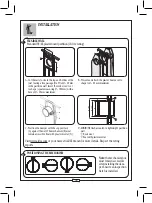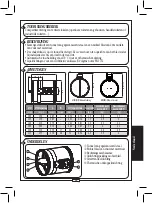
22
Storage prior to installation
These devices should be stored in an enclosed, dry and frost-protected location,
away from the weather. They should not be stacked any higher than the original fac-
tory packaging. They should be arranged to prevent damage to mechanisms of moving parts, and
to avoid deformations of the device body due to excess loads or humidity. Do not leave dampers
exposed to direct sunlight as this will cause premature ageing of the fuse.
Protecting the equipment during installation
Although the fire damper, and more particularly its mechanism, is protected by a synthetic ma-
terial cover, it should be protected from projections of any kind (mortar, paint, sprayed cladding,
etc.) that may affect the operation of the trip devices and signalling devices.
The equipment should also be protected against the risk of water run-off or high condensation,
both for the refractory part and the metal parts, or electromagnetic components.
The airtight intumescent seals are primordial for the damper’s fire resistance, so any mechanical
actions on the refractory parts should be avoided.
All suitable precautions should be taken to prevent premature ageing of the equipment before it
is put into service in completed installations.
Wedging and filling in order to seal devices in place correctly should not cause deformations
likely to adversely affect the operation of the fire damper.
Equipment inspection prior to activation of systems
Dampers should be maintained in mechanical standby position before the ventilation systems
are effectively put into service, so as not to apply forces to the retention devices or trip devices
until the normal operating conditions are met.
Maintenance
• Take all suitable precautions for performing work on the mechanism of a rotating mechanism
that features gears and powerful springs.
• As all the elements should be powered using Very Low Safety Voltage, earthing is not necessary.
We recommend that work be done with power off, to prevent short circuits that may damage
the device.
• The cover protecting the mechanism must be replaced in the correct position after each time
it is removed.
• Depending on the type of building, periodical test operations are planned (see NF S -933).
We recommend a minimum of one annual operational inspection.
PRECAUTIONS AND MAINTENANCE


































